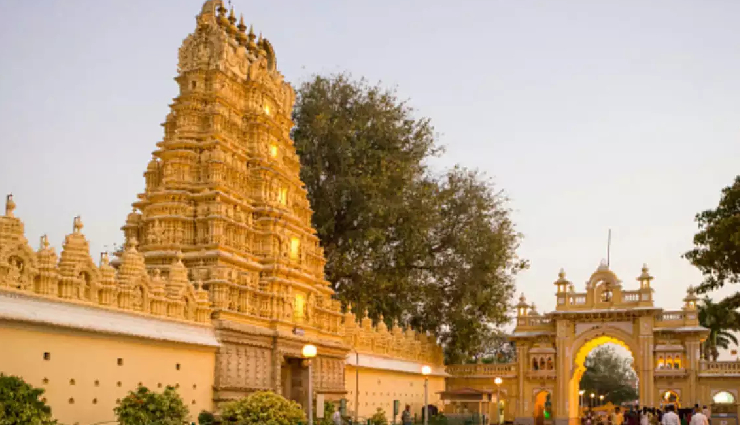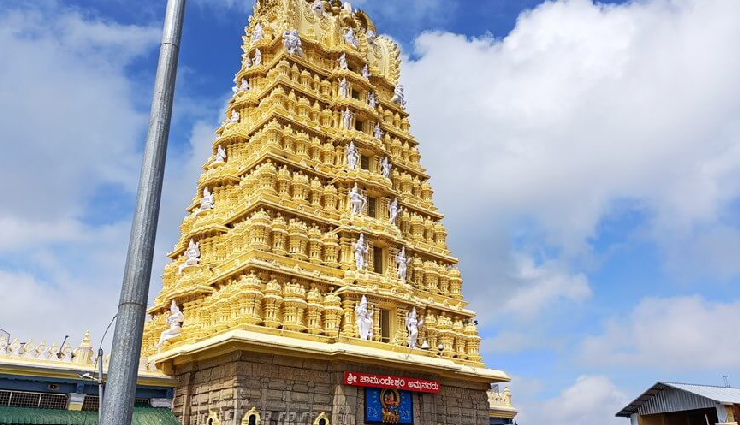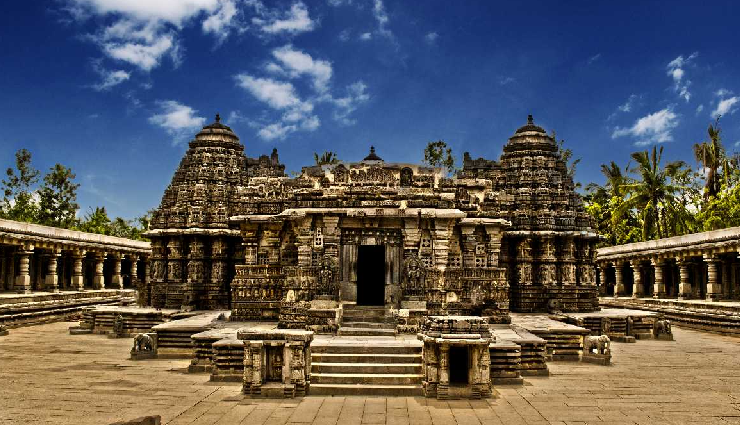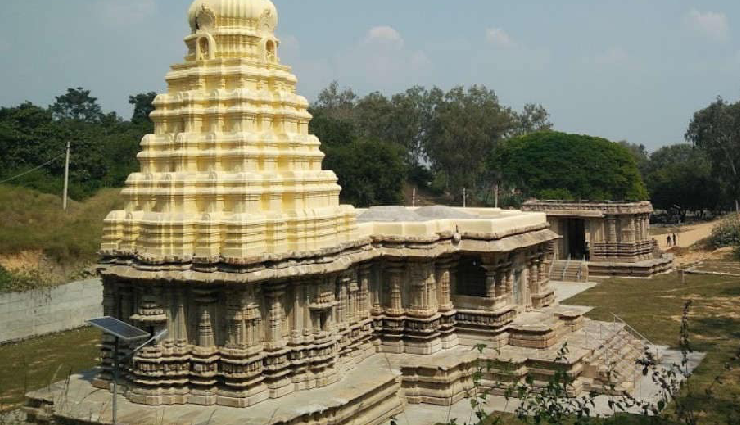3 Most Famous Temples To Visit In Mysore
By: Priyanka Maheshwari Mon, 08 Jan 2024 5:42:35

Mysore, alternatively known as Mysuru, resides in the southern state of Karnataka, India, and stands as a sought-after destination for both tourists and pilgrims. Its allure lies in the abundant cultural heritage, splendid architecture, and historical significance that the city possesses. A compelling factor drawing visitors to explore the temples in Mysore is the city's profound connection to Hinduism. Numerous temples within Mysore, with their enduring presence, consistently captivate devotees from various corners of the globe. These sacred sites not only endure the test of time but also exhibit unparalleled craftsmanship and intricate designs, offering a glimpse into the rich cultural and religious traditions upheld by the people of Mysore.

# Chamundeshwari Temple
Chamundeshwari Temple, situated atop the Chamundi Hills in Mysore, Karnataka, India, stands as one of the city's most renowned temples. Dedicated to the Hindu goddess Chamundeshwari, regarded as a manifestation of Goddess Durga, the temple annually draws thousands of pilgrims. Renowned for its striking architecture and intricate designs, the Chamundeshwari Temple serves as a testament to the cultural and religious practices embedded in Mysore.
Believed to have originated in the 12th century under the patronage of the Hoysala kings, the present-day structure dates back to the 17th century, constructed by the Wadiyar dynasty rulers. The central deity, Chamundeshwari, is worshipped through a splendid idol adorned with jewels and flowers. Within the temple, one finds idols of Nandi, the sacred bull of Lord Shiva, and Mahishasura, the demon vanquished by Chamundeshwari.
Perched at an elevation of approximately 1,000 feet above sea level, the temple provides a breathtaking panoramic view of Mysore city, surrounded by lush greenery that creates a serene environment conducive to meditation and prayer.
An additional highlight is the annual Navaratri festival celebrated with great fervor. During this festive period, the temple comes alive with vibrant decorations and lights, attracting devotees nationwide who converge to offer prayers and seek the goddess's blessings. Chamundeshwari Temple stands not only as a significant religious site in Mysore but also as a symbol of stunning architecture, cultural richness, and spiritual importance. For those keen on exploring the religious and cultural traditions of India, it stands as a must-visit destination.

# Somanathapura Temple
The Somanathapura Temple, a renowned 13th-century Hindu temple situated in Karnataka, India, stands as a splendid example of Hoysala architecture. Dedicated to Lord Vishnu, this architectural marvel is nestled in the town of Somanathapura, approximately 35 km from Mysore. Commissioned by Hoysala Empire King Narasimha III in 1268 AD, this three-chambered temple features a central sanctum that houses a captivating standing image of Lord Vishnu.
Notable for its intricate carvings and sculptures adorning walls and pillars, the temple's outer walls are adorned with friezes portraying tales from Hindu mythology such as the Ramayana and Mahabharata. The inner walls showcase detailed carvings of deities and scenes from daily life. Boasting a star-shaped platform with sixteen points symbolizing the lunar phases, the Somanathapura Temple's four entrances are adorned with ornate carvings.
Regarded as one of the premier temples to visit in Mysore, it is a popular tourist destination in Karnataka, attracting visitors with its well-preserved Hoysala architecture. The temple not only stands as a testament to the artistic prowess of the Hoysala Empire but also serves as a captivating glimpse into the cultural and historical richness of the region.

# Pathaleshwara Temple
The Pathaleshwara Temple stands prominently among the revered temples in Mysore, offering a spiritual haven for those seeking a transcendent experience. Situated in the city of Hubli in the Indian state of Karnataka, this ancient Hindu temple is dedicated to Lord Shiva, holding significant pilgrimage importance in the region. Believed to have been constructed during the 10th century AD by the Western Chalukya dynasty, the temple boasts a distinctive architectural style that blends Chalukya and Hoysala influences.
Elevated on a platform, the temple features a front mandapa (hall) and a rear sanctum sanctorum (garbha griha). The mandapa showcases a pyramidal roof adorned with intricate carvings depicting scenes from Hindu mythology. Within the sanctum sanctorum resides a lingam, encircled by smaller shrines devoted to deities like Ganesha, Parvati, and Kartikeya. The sanctum's walls are adorned with meticulous carvings and sculptures, showcasing the temple's rich artistic heritage.
Having undergone various renovations, with the most recent one in the early 2000s, the Pathaleshwara Temple is currently under the care of the Archaeological Survey of India, standing as a popular tourist attraction in Hubli. The temple's allure extends to the annual Maha Shivaratri festival, drawing a significant congregation of devotees who partake in the grand celebrations with fervor and splendor.





